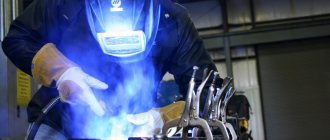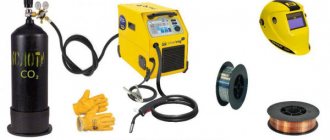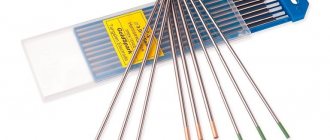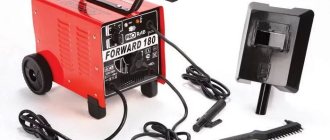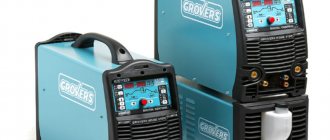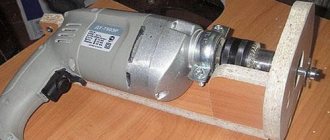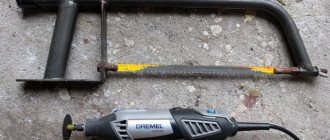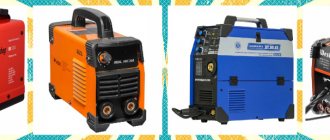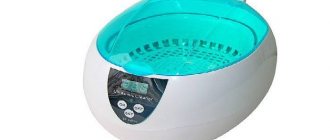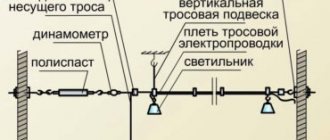Creating accurate and high-quality metal structures is difficult to imagine without the use of devices such as clamps . These are special clamps that allow you to securely fix and precisely join components of metal structures during assembly or repair work.
Workpieces are clamped most often with jaws, but other gripping elements can also be used, it all depends on the type of clamp.
Today, there are over a dozen types of clamps:
- F-shaped
- G-shaped
- Pipe
- Tape
- Corner
- Spacers
- Cross
- Two- and three-axis
- etc.
In addition to the type of construction, clamps for welding differ from each other and according to the principle of compression:
- Screw
- Trigger
- Lever
- Spring
- etc.
Below we will describe the four most common clamps, which no assembler/repairer of metal structures can do without. So, what types of clamps are in demand today.
G-clamps
This is the simplest version of clamps. The design of such devices is represented by an ordinary bracket with a screw clamp . An example in the photo below.
G-clamps are used to secure workpieces to the edge of a benchtop or welding table. Such clamps are mainly suitable for working with oversized parts .
Using G-shaped clamps, you can immobilize and position in the correct direction: angle, channel, sheet metal, pipe with a rectangular profile, hexagon and other types of rolled products. At the same time, G-shaped clamps make it possible to reliably press parts together: pipe to pipe, pipe to metal sheet, etc.
The main disadvantage of G-shaped clamps is the ability to clamp workpieces only at the edge of the tabletop , since the clamp has a noticeably limited profile depth. What other types of clamps are there?
Types of clamping devices
Work clamps used in welding can have the following designs:
- an ordinary terminal in the form of a metal clothespin with the working name “crocodile”;
- special clamp with lock for welding;
- so-called screw docking clamps, which include a corner clamp;
- magnetic terminals and other types of fixing clips.
In practice, welding clamps of the first three types are most often used, as they have proven themselves when working with any type of welding equipment.
Adjustable clamping pliers with a locking mechanism ensure reliable contact with the workpiece and workpiece during welding. The simplest version of a screw clamp is a regular bolt with a nut screwed onto it, connecting two crimp plates.
Much less often when organizing welding, the so-called “magnetic terminal” is used, regarding which the opinions of welding specialists differ markedly. A separate section of the article will be devoted to it.
Clamps are produced in a wide range. If you weld regularly, you can choose a clamp that will be most convenient to use. There are clamps in the form of pliers, pliers, elongated and other varieties.
F-clamps
If G-shaped clamps have only one adjustment (clamp height), then F-shaped clamps have several adjustments . This is directly the height of the clamp and the so-called “booster”, which guarantees the most reliable fixation. An example of an F-shaped clamp is shown in the photo below.
As with G-type clamps, F-type clamps are designed to clamp workpieces either to each other or to the edge of the countertop.
F-shaped clamps regulate the clamping height by means of a guide bar along which the lower clamping jaw runs. The principle of fixation in such clamps is simple. Resting against the workpiece, the lower jaw wedges on the guide bar. To strengthen the wedge, you just need to tighten the auxiliary screw clamp.
F-clamps for welding and carpentry applications typically feature a guide bar. In welding clamps, the guide bar is usually flat, but in joinery fixtures, the guide bar most often uses a ribbed surface.
Unlike G-devices, clamps with an F-shaped profile allow you to fasten fairly high workpieces . Of course, there are also very small F-clamps. The height of the jaw opening in F-clamps can be from 100 to 300-500 (mm). The specific clamping height will depend on the clamp model. From the video below you can learn how to choose a clamp for welding.
Angle clamps
This is a series of highly specialized clamps. With their help, you can accurately join shaped bars at right angles . Such clamps are indispensable in the manufacture of frames and frames. The corner clamp allows you to weld the ends of pipes, angles, channels, etc.
There are mobile and stationary clamps. Mobile type clamps can be used locally, that is, directly on the metal structure itself. Stationary clamps are rigidly attached to the table top of a metal workbench or assembly/welding table. Stationary clamps allow you to join rolled products in one place, which has a positive effect on the accuracy of manufactured structures. Stationary type devices have proven themselves in serial and mass production of metal structures .
Classic corner-type clamps secure workpieces using clamping jaws. In more modern models, rental fixation is implemented using magnetic forces. It is enough to simply place the workpieces on the guides, the rolled product itself will “stick” to the clamp. Magnetic clamps are characterized by their simple and reliable design.
The weak point of magnetic corner clamps is the ability to work only with metal workpieces that exhibit magnetic properties. Clamps with clamping jaws can join aluminum, alloy steel, copper and all kinds of alloys that do not react to magnets.
How to choose?
Clamp type
The mass clamp for the welding machine is available in three types: clamp, crocodile and magnet. Let's look at them in more detail.
Clamp clamp
A clamp is the most primitive and inexpensive type of holder. The most striking example is the manual clamp for welding FIT type C. This type of clamp provides reliable fixation and a smooth supply of current to the metal being welded. Contact is always reliable and stable. But the clamp is quite bulky and not always convenient to use.
Alligator clip
Welding crocodile clamps are the most popular type of clamp. They are securely fastened to metal, they are easy to use, and can be attached to a part of almost any thickness. This type of clamp received its unusual name due to its appearance. When open, the clamping mechanism resembles the mouth of a crocodile.
But there are also disadvantages to such a device. For example, the weakest point of the “crocodiles” is the spring, thanks to which the clamp opens. If the assembly is poor, the spring quickly becomes unusable. Also, this type of clamp is suitable only in cases where it is necessary to attach the clamp specifically to the part being welded.
Clamp magnet
Magnetic type welding clamps are the most expensive. But at the same time the most versatile. They can be attached to parts of any thickness, shape and size. They are easy to use and rarely break. They do not burn out and can withstand large temperature changes. Their advantages are especially evident when welding in hard-to-reach places.
But it wasn't without its drawbacks. Magnetic clamps are difficult to use when welding small parts, such as fittings. Also, magnets do not work when welding non-ferrous metals, since they are practically non-magnetic. Magnetic clamps require frequent cleaning, especially to remove metal shavings.
If the magnetic ground terminal is attached to a dirty surface, the magnet will simply overheat. Avoid these mistakes.
What to pay attention to
Before purchasing, you need to take into account not only the quality of the clamp, but also several other parameters. Make sure the clamp can support the weight of the cable you are using. Also, when buying a “crocodile”, check with what force the spring clamps the pliers. It shouldn't be too weak or too strong. Don't forget about the thickness of the metals you are going to weld. Make sure the alligator clip or clamp is of sufficient size. For a magnetic clamp, these problems are not relevant.
Clamps
A separate category of clamps, which is intended for installation on welding or assembly tables. Clamps of this type are often called “quick-action clamps . Unlike G- and F-shaped clamps, clamping clamps allow you to fix workpieces not only at the edge of the tabletop, but anywhere in the work area.
Clamps of the clamping type are mounted either using special technological connectors (round or T-shaped) or adjustable plates.
There are many types of clamping clamps. Below is a video, the author of which demonstrates a wide range of quick-action clamps. The video also contains recommendations on how to choose a clamp for welding.
Clamps can be divided into several broad categories:
- With screw clamp
- Lever/hinge
As is clear, in clamps with a screw clamp the jaw moves on a threaded rod. The lever is pressed by an eccentric mechanism. In advanced clamps, the eccentric clamping force can be adjusted.
Additional Information
When choosing clamps for welding work, special attention should be paid to the materials used in the design of the clamp . For fixing metal workpieces, preference should be given to clamps with metal jaws . The fact is that when welding workpieces, the metal of the assembled part can heat up to the point of redness. If the sponges are plastic or rubber, they will immediately “float”.
Plastic and rubber sponges are only good for carpentry operations.
You should not limit yourself to ordering a clamp of one single size. In the bins of an experienced metalwork assembler, each type of clamp is represented by three or even four standard sizes .
If welding work is carried out as part of serial or mass production, then preference should be given to factory-made clamps . In this case, homemade clamps will not provide high accuracy of joining of workpieces. For single home use, experienced welders often use homemade clamps. Among such clamps there are also unique specimens that have no analogues on the industrial products market.
What to look for when choosing a welding clamp
You need to start with what purpose the terminal is selected for, that is, how loaded it will be, what type of machine is used for welding. Professionals take weight clamps for a welding machine with a margin of strength, amateurs take them to look beautiful (and this happens), but the correct approach is based on the following principles:
- The clamping power must be designed for a higher current relative to the rated current at which the inverter operates.
- Specifics of the welding process: if you need to constantly and quickly change the connection point, then an element like a clothespin is suitable.
- The compression force of the tightening jaws should be sufficient to hold the cable if the latter is suspended during the welding process.
- The opening size of the terminal jaws must exceed the size of the contact pad where the ground is planned to be connected.
- You should pay attention to whether the manufacturer can be trusted. If the latter has proven itself to be the best on the market, feel free to purchase the product.

